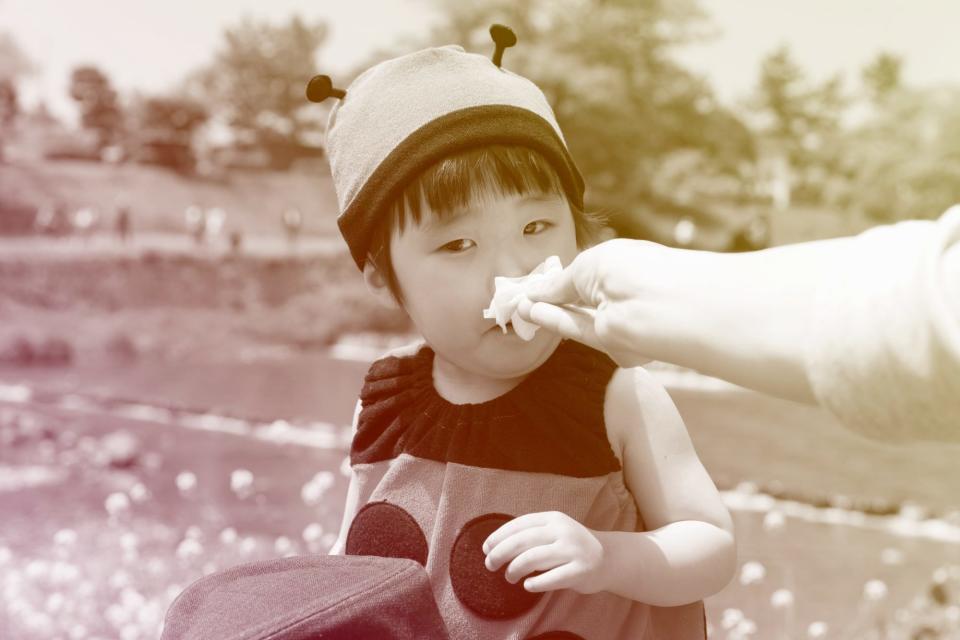Can Babies Have Seasonal Allergies?
During allergy season, you might not leave the house without checking the pollen count and stuffing your pockets with tissues. But can babies get seasonal allergies, too? Here’s what parents need to know.
Can Babies Get Seasonal Allergies?
Seasonal allergies are usually caused by pollen from weeds, grasses, and trees. These types of allergies are actually very rare in babies, and they aren't typically seen until children are 2 or 3 years old at the earliest. "Allergies develop after a cumulative exposure to an allergen," explains Anne Miranowski, M.D., a pediatric allergist in Fairfax, Virginia. "An infant doesn't spend enough time outdoors to develop a reaction to tree pollen, grass, or ragweed."
RELATED: When is Allergy Season?
One your little one becomes a toddler, though, the allergies may kick in. She’s at an increased risk if Mom or Dad also has an allergy. Her trigger may be completely different, though; if you're allergic to pollen, your child might react to cats. But even if you and your spouse never itch or sneeze, your kid isn't necessarily in the clear.
Childhood allergies are on the rise, and many young sufferers have no family history. Some experts think our super-clean, ultra-hygienic lifestyle plays a role. If kids live in an almost-germ-free bubble, the theory goes, their immune system will pick fights with other invaders, like pollen or household particles.
Does My Baby Have Seasonal Allergy Symptoms?
"If you take your baby for a walk outside and often notice a runny or stuffy nose, itchy eyes, and trouble breathing, your baby may have an allergy," says Renee Matthews, M.D., an asthma and allergy expert in Chicago. But kids aren't typically bothered by outdoor triggers like grass and ragweed until after age 3, so the cause might be something else entirely.
RELATED: Seasonal Allergy Symptoms in Kids
Also, babies can be bothered by household allergens such as mold, dust mites, pet dander, and cockroaches. Nasal allergies affect as many as 40 percent of children, and symptoms can start as early as 6 months. Pay close attention to when your child's sneezing or itching peaks: This can clue you in to what's responsible. For example, dust mites live in bedding and furniture, so if your child is allergic to dust mites, she'll probably wake up with itchy eyes and a runny nose after inhaling them overnight. Or if your baby can't tolerate pet dander, you might notice that her symptoms erupt when you're visiting Grandma and her cats.

Getty Images
Testing Baby for Seasonal Allergies
It's unusual for a baby to be tested for pollen allergies, but an allergist can help decide if a blood test or a skin prick test is necessary. A blood test involves withdrawing blood and measuring antibody levels toward certain allergens to see if the levels are high.
A skin prick test involves a needle or probe coated with a drop of solution containing a certain allergen. The needle (or several needles coated with different allergens) is then used to gently prick a baby's arm or back so the substance can enter under the skin's surface. The allergist will then wait to observe if there is a reaction to the allergen, such as the appearance of a hive or rash. "The skin prick tests can determine whether the problem is allergens, caused by pollen, or indoor allergens, caused by pet dander, dust mites, and cockroaches," says David Stukus, M.D., assistant professor of pediatrics at Nationwide Children's Hospital in Columbus, Ohio.
RELATED: How to Treat Seasonal Allergies
What to Do for a Baby With Seasonal Allergies
If the blood test or skin prick test determines your baby does have allergies, the doctor might prescribe medication or suggest a treatment plan. Otherwise, you can take certain measures to prevent your baby from coming in contact with pollen.
Avoid going outdoors at peak pollen times, usually the middle of the day; instead, head outdoors in the early morning or late evening, and try not to go outdoors during windy days. If you do need to run errands with Baby during peak times, be sure to wash your hands and your baby's hands after you come back inside to remove any pollen, or bathe your baby to wash away traces of pollen. Keep windows closed and air conditioners on in the warmer months.
Limit dust and pet dander at home by laundering sheets and towels in hot water, and avoid line-drying clothes, as pollen can stick to them. Vacuum floors and carpets at least once a week, and use a vacuum with a HEPA filter, which removes some allergens. These simple changes to your routine can help you and your baby enjoy the outdoors in all seasons.

